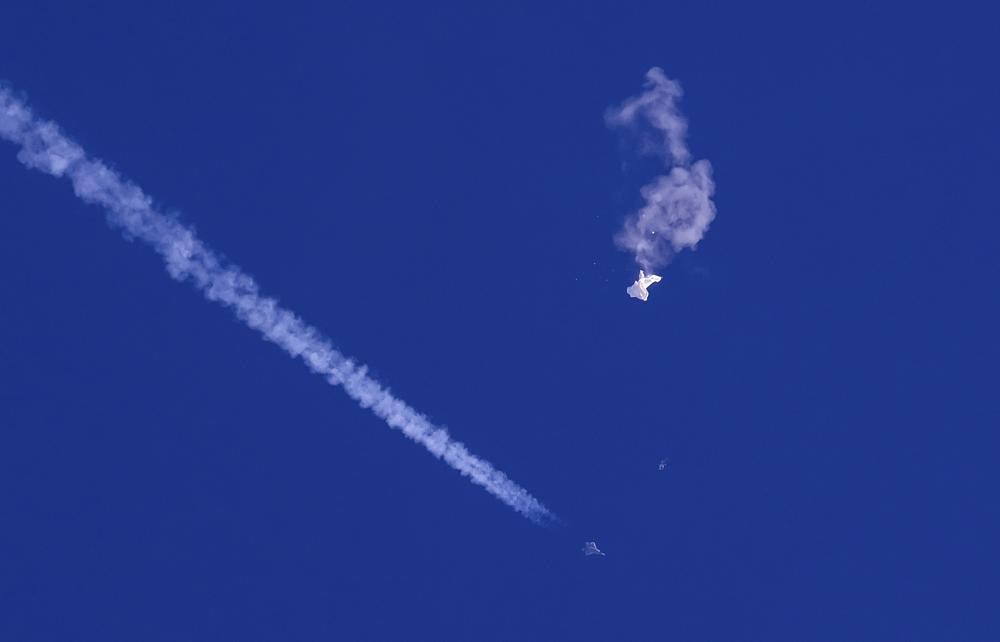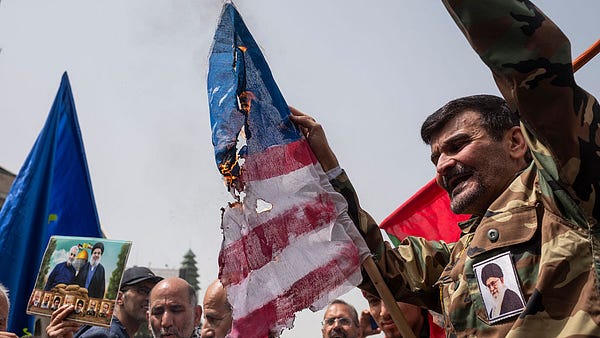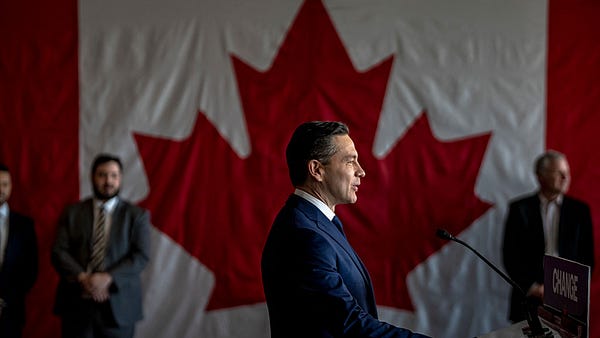
The Free Press

The secrets of the mysterious crafts floating across America are now buried forever under the sea ice of northern Alaska, the wilds of the Yukon, and the choppy, gray-white waters of Lake Huron.
Amazingly, it was too cold, and the weather conditions too harsh, for the United States military—which had no trouble blasting the balloons out of the sky—to keep looking for their debris. Late last Friday, the U.S. Northern Command, part of the Department of Defense, called off the search.
So we’re left not knowing—for sure—where they came from, or what they were looking for, or what they found. We can’t even confirm whether they were all Chinese or all balloons.
The only clue to the objects that descended on us from out of the blue is two words uttered by the president of the United States: private companies.
Last week, President Biden told the world the balloons are probably “tied to private companies, recreation or research institutions studying weather or conducting other scientific research.”
“[N]othing right now suggests they were related to China’s spy balloon program or that they were surveillance vehicles from any other country.”
Which suggests it could be any old company from Peoria or Stockholm or wherever doing something anodyne like researching wind patterns or sending fried chicken into the stratosphere.
What the president didn’t say is that the balloons were likely dispatched by a Chinese company that’s not at all a company in the way Americans imagine them, but really, an extension of the Chinese military intelligence regime.
First things first—what are the odds China is behind all this?
High.
Consider that there is a lot of stuff up there from countries around the world, including the United States—mostly balloons that collect topographic data, gauge weather patterns, and enhance our communications.
In 2022, that stuff included 366 unidentified aerial phenomena, or UAPs, floating above the United States. Most of them were perfectly innocuous, but 171 could not be explained.
Still, the United States Air Force chose not to fire a missile (pricetag per missile: $400,000 to $450,000) at any of those. (Or, at least, there were no reports of that having happened.)
Not this time.
That’s because right before the three recent mysterious UAPs turned up, there was another UAP—and pretty much everyone now agrees that that one was a Chinese spy balloon. On February 4, an F-22 blew it up off the coast of Myrtle Beach, South Carolina.
“We detected a Chinese balloon, and then we opened the scope and found more,” said Ryan Graves, a former F/A-18 Super Hornet Navy pilot who recorded more than 100 encounters with UAPs while patrolling the Eastern Seaboard of the United States a decade ago. “It’s certainly tied together.”

Is there any chance the three mystery crafts were not spying on America?
I asked Miles Yu, the China-born director of the Hudson Institute’s China Center, whether he thought there is a world in which the mysterious flying objects were not working for Chinese intelligence.
“Impossible,” Yu told me. “The Chinese government can and does exert significant influence over any private enterprise, far beyond what the U.S. could do.”
Retired U.S. Admiral James Stavridis, a former NATO Supreme Allied Commander, added: “In China, there is a very close nexus between commercial companies at every level and the People’s Liberation Army.”
Graves, the former Navy pilot, noted that the United States has already gathered a lot of information about the balloons—and our decision to take them out suggests that whatever we know isn’t good.
“We have gun-camera footage, radar, other information about what this was,” Graves said. “That’s true even if we don’t find objects on the ground.”
Mira Ricardel, a principal at The Chertoff Group who was deputy national security advisor under John Bolton, said, referring to China: “It’s not like they have companies over there that say, ‘Hey, we’re going to fly objects over the U.S. like SpaceX.’ This is not a democracy.”
Ideally, said Mary Kissel, a senior adviser under former Secretary of State Mike Pompeo, the balloon saga would wake up the country. “Beijing is not our friend,” Kissel said. “This is not the action of a friend. France would not fly a spy balloon at 60,000 feet above us.”
So what, exactly, were the balloons looking for?
Ricardel suspects the point of launching the balloons was “to see what the U.S. response will be.”
The Chinese are especially adept at sending balloons into “near space,” Yu said. “If you fly a balloon at 60,000 feet, it’s much easier to take lateral images of ground installations rather than use a satellite hundreds of miles off the ground,” he said.
Balloons are cheap, fast, easy to use, and can be equipped with infrared cameras “to see what’s happening beneath the clouds,” said Anastasia Quanbeck, a spokesperson for Aerostar, an aerospace company based in Sioux Falls that operates stratospheric balloons worldwide.
They can also stay airborne—around 80,000 feet—for years at a time, all the while broadcasting data back home in real time. Like TikTok hoovering up our data, but from a very high altitude.

So why didn’t the president just tell us the whole, unvarnished truth?
A few possible reasons.
One is avoidance. In Washington, Yu argued, “the guiding philosophy is to avoid a direct conflict with China.”
That’s an odd approach, he said, given that China “uses confrontation to extract cooperation”—meaning it creates problems to force the United States to ease up on other fronts. Sure, we’ll call off the balloons, as long as you stop yapping about intellectual property rights or Uyghurs or Taiwan.
Ron Garan, a former NASA astronaut who spent six months in space and another three years leading a high-altitude balloon company, believes the flying objects were “rogue balloons.”
The balloons’ operator, in China, probably lost control of them, and then their self-destruct mechanism failed, Garan said. He was amazed by Beijing’s response to the whole saga. First, the Chinese expressed regret; then, after we blew up balloon No. 1, they became angry; then, they went off about all the spy balloons the U.S. has sent to China—all of which exacerbated our already tense relations. “China couldn’t possibly think they could get away with it,” Garan said.
Former Navy pilot Ryan Graves said that the federal government’s silence on this story reflects a broader reticence to communicate plainly and candidly about national security, American airspace, or UAPs.
Graves said that he had become something of a pariah in his old Navy circles for speaking publicly about UAPs. “No one likes sticking their neck out there,” he said. “My former commanding officer—I was in touch with him via a friend I ran into. He was on FaceTime and said, ‘Look who’s here.’ I was wearing my alumni hat, and the officer said, ‘Take that fucking hat off.’ In his opinion, I was an embarrassment to the squadron.”
What does China likely make of our response to its flying objects?
The most important data the crafts provided was America’s reaction to it—further confirmation, in the eyes of the Chinese, of our national decline.
“China sees this as a way to erode our unity, and that gives them an advantage,” Elliot Ackerman, an author and former Marine, told me.
Mary Kissel said the balloons had cast a spotlight on a gaping hole in our national discourse. “There are a lot of gray areas of warfare that we really, as a nation, have not confronted,” Kissel said. “There’s a lot of stuff floating in the air above us at 60,000 feet all the time and we have not come up with a coherent policy to deal with it.”
Instead, there was the predictable partisan sniping—Republicans accusing the president of being weak, Democrats insisting the president acted prudently.
Worse than that, there was hysteria. We glimpsed a few balloons traipsing across the skyline, and suddenly we imagined hundreds, thousands of balloons with cameras crisscrossing the American heartland, gazing into our nuclear silos and our bedrooms, and there was talk of UFOs—sorry, UAPs—descending upon us from outer space. We imagined this was the opening act of Red Dawn or worse yet, Independence Day. We wondered what the White House wasn’t telling us.
“When you sprinkle a few kernels of doubt on what the government is telling you, that in and of itself is a win,” Ackerman said, alluding to the Chinese and the spy balloons we will never find. “It’s got everybody’s imaginations going, like the beginning of a spy novel.”
This is the first piece by Adam Popescu, who recently joined The Free Press as a Senior Reporter.
Read our story about how China got our kids addicted to ‘digital fentanyl’ here. And if you’re looking for more thoughtful coverage on world events, become a Free Press subscriber today:













Much like lawyers , you can tell that the CCP is lying by watching their lips move.
I have to admit: I look at the sky differently now. And at my age, I've got these round things floating on my eyeballs anyway so it can get spooky. My poor wife, sitting on our porch trying to enjoy her cup of tea. "There goes another one!" I say, then, as the eye circle slips away, "No, I guess not." I have no way of knowing what's happening in the area of the Earth that is below the level of my chin. There's another one. Damn! I'll never finish this comment.